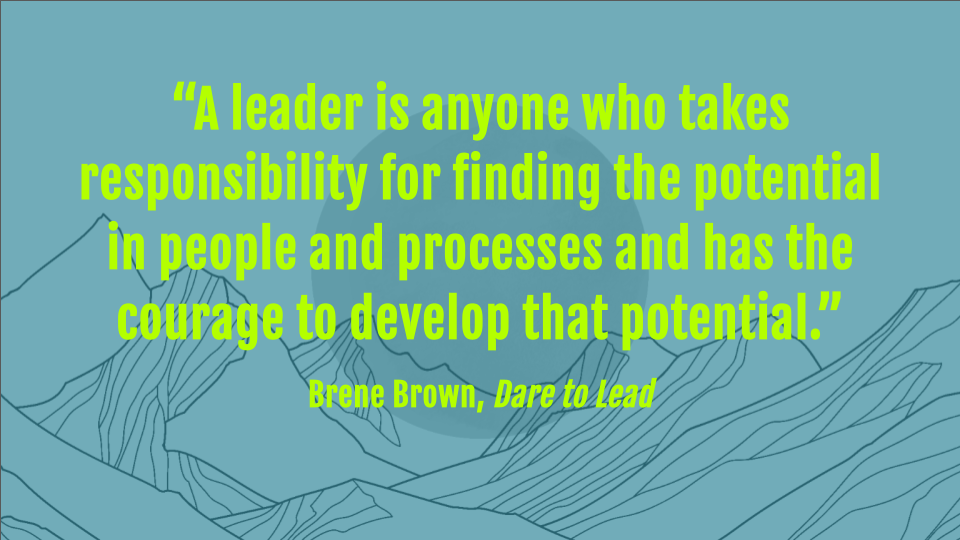Leadership is Creative Work
Sep 09, 2025We often talk about leadership as a responsibility, but rarely as a form of creative expression. For business owners, it’s both.
Early in my career, I thought being an artist meant doing everything myself: the concept development, the design work, the fabrication, even the photography and documentation. I carried this unspoken pressure that true creative legitimacy came from personal execution. If I wasn’t directly shaping every detail with my own hands, I questioned whether the work was mine. That mindset lingered for a long time, reinforced by the belief that control and credibility were earned by how much I could do alone.
Over time, I realized that my value wasn't in touching every part of the process, but in holding the vision and shaping the experience around it. When I take on a large-scale installation or launch a new creative initiative, I intentionally seek out people who are more skilled than I am in specific areas. They are the experts: engineers, fabricators, digital artists, producers, and my responsibility is to create an environment where they can do their best work in alignment with the larger purpose. I am directing energy, guiding decisions, and making meaning from complexity. That process may look different from the hands-on making I once associated with being an artist, but it is no less creative.
One of the most common fears I hear from creative entrepreneurs is that as they grow, they will lose the very creativity that got them started. That if they become leaders, they’ll become buried in tasks that pull them away from the work they love. That the joy of making will be replaced by managing, and their identity as a creator will erode in the process. I understand this fear deeply.
But what I’ve come to believe, and what my experience continues to reinforce, is that leadership, when practiced with intention and integrity, is one of the most advanced forms of creative work. It requires vision, intuition, empathy, and adaptability. It requires navigating ambiguity and tension with care. It’s not about replicating a process, it’s about making decisions that affect the emotional, functional, and cultural outcomes of a shared experience. That is creation. It’s just a different kind of medium.
Some of the most compelling creative leaders in the world embody this truth. Ai Weiwei, a conceptual artist whose work spans film, sculpture, architecture, and installations, is a powerful example. Much of his work is realized through large-scale collaborations with architects, builders, documentarians, and fabricators. He works at such a large scale and volume that he’s rarely able to touch the physical materials himself. His role is to set the vision, hold the conceptual thread, and inspire the right people to bring that vision into form. He isn’t just making objects. He’s constructing environments, often politically charged and emotionally resonant, that expand how we understand culture, power, and public space.

Brené Brown captures this idea with clarity in Dare to Lead, writing, “A leader is anyone who takes responsibility for finding the potential in people and processes and has the courage to develop that potential.” That reframing of leadership, from control to stewardship, resonates with me deeply. When I think about what it means to lead creatively, it means being willing to protect and develop something fragile before it's fully formed, whether that’s an idea, a team, or a shared cultural experience.
If you’re building something original and you're stepping into a larger role, whether it's directing a project, leading a team, or expanding your business, there’s a chance you’ll feel like you’re drifting away from the creative energy that once grounded you. But more often than not you’re simply entering a different phase of the creative process, one that relies on clarity, discernment, and relational depth rather than pure execution. You’re still making. You’re just making through people, through systems, through moments of decision that ripple outward.
When done well, leadership becomes a form of art that is both deeply personal and inherently collaborative. It means learning to express your creativity through communication and decision making - just as much as through design, detail, or execution.
Leadership doesn’t pull you away from the work. It gives your creativity the clarity and direction it needs to grow. When you lead with vision, care, and trust, your team doesn’t just support the work. They help it become something larger than you could build alone.

